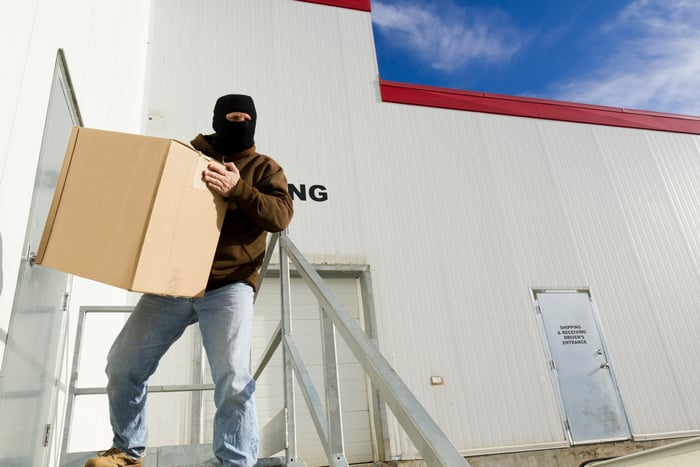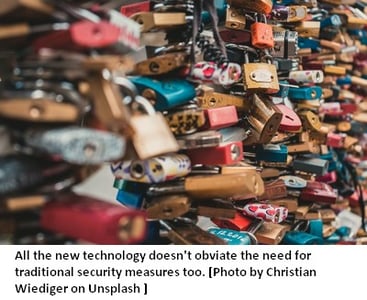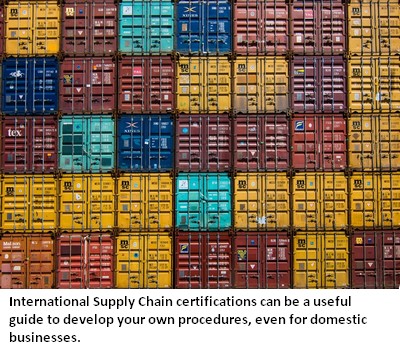
Theft from the supply chain is an old problem that even the newest facilities can’t entirely eliminate. A recent arrest in the Seattle area showed just how big a dent a small group of industrious thieves can make in even the biggest player in the industry.

In this case, TWO contract delivery workers, who also happened to be roommates, created a lucrative side hustle that involved redirecting over 48,000 items they were contracted to ship to two phony pawn shops that then sold them ON AMAZON using a marketplace account operating as another business.
The two enterprising drivers are suspected of receiving over $4 MILLION for their stolen goods, and while the full proceeds of what the pawn shops earned from selling the stolen goods on Amazon, police have worked with Amazon and have learned that since 2013, entities associated with the ring have generated sales of at least $10 MILLION!
Apparently, the pawn shops were taking in new products from other retailers like Home Depot, Lowe’s and others brought in by a steady stream of willing shoplifters. So, in effect, this operation was a clearing house of products from nearly every part of the supply chain.
Most Common Theft Tactics
There are a number of different ways cargo and product can be stolen, some if more straightforward than others, but the most effective methods tend to happen to product in transport, less so for product already sitting in inventory in your warehouse.
- Pilferage – the most appropriate name for the typical theft from the warehouse, it also applies to products that go missing from delivery trucks as well. While the example at the top of this article was an extreme case about delivery drivers, the bigger issue tends to be unsuspecting drivers having product stolen while they are making deliveries. This type of theft is especially difficult to manage because it is often undetected until the driver reaches the destination for the missing package, and police can be reluctant to file a report because the driver will very likely be unsure of where the theft occurred.
- Unattended Cargo Theft – the other major type of straightforward, old-fashioned thievery comes from unattended cargo being stolen from locations where it may be temporarily stored, or parked, like store parking lots, drop lots, truck stops, etc. Trailers left unattended are easily moved somewhere else to determine what the cargo and its value may be. Refrigerated trucks can display temperatures that could indicate the presence of high-value cargo (the difference between a load of pharmaceutical products and pallets of popsicles is significant!).
- Online Deceptions – technology has given sophisticated tools to thieves with bigger ambitions. Like any other company or personal system, protecting against malware from phishing emails really matters, because it can lead to a long list of issues:
- Access to pick up and delivery information that could lead to in-transit thefts.
- Creation of forged paperwork to create fictitious pick-ups.
- Identity theft, double-brokering scams false loads and bid solicitations, etc.
Generating and Posting a false load for bids is a common way to obtain additional information needed to steal your company’s identity.
Remedies
On the face of it, improving security for both cargo and warehouses would seem logical and obvious. But there is a list of things that make a difference that are not on everyone’s list, because they require collaboration across the business, and are not just the purview of the DC or logistics managers.
Cyber-security – as a general requirement for ANY business, securing your business’ digital assets is of primary importance.
- Securing employees online accounts with up-to-date firewalls, anti-malware tools, etc. Not sure? Have a security audit done.
Preparing Your Staff - As much cargo theft relies on insider information, a trusted and well-informed team will significantly lower risk.
- Educate management on best practices in hiring. Developing hiring practices to pre-screen for higher risk candidates.
- Educate staff on risks and mitigation, so they will be prepared to respond to smaller day-to-day issues and emergencies.
- Make local law enforcement aware of your challenges. Inviting them into the workplace to tour, along with sharing best practices (or worst practices!) with staff will also make them aware and less likely to commit any pilfering or worse.
- BUT - make Safety a priority and ensure that security does not conflict with staff safety.
Smarter Systems and Security – use a combination of new and old technology that complement each other.
- GPS and RFID are proven technologies already in the field. They allow remote disabling of vehicles, alarms for going out of predetermined routes or areas and can be used for individual high-value cargo items in addition to the trucks.
 A large percentage of the theft at home and the workplace is about “opportunity”. The diligent use of traditional security like padlocks, fences, seals and physically securing equipment and containers on site removes the most opportunistic thieves from the equation.
A large percentage of the theft at home and the workplace is about “opportunity”. The diligent use of traditional security like padlocks, fences, seals and physically securing equipment and containers on site removes the most opportunistic thieves from the equation.
Information Management and Documentation – security should be a consistent, repeatable process that can be trained easily.
- Document policies and procedures for both prevention and for what to do in case of theft. Staff should be either aware of be able to access their required actions quickly (i.e. who to contact first, what to do/NOT to do, etc.).
- Classify your information to better allow for access by those who need it. Things like drop-off points, routes, etc. along with inventory and shipments of high-value items should have a limited audience.
- Insurance should also be up to date and designed to cover cargo theft. Coverage and circumstances that could invalidate your policy need to be understood and incorporated into training and mitigation.
Upgrade Processes – Updating security without updating processes will leave vulnerabilities in place.
- Vet your third party suppliers to see how they vet their employees, take responsibility for theft and have proper mitigation plans in place.
- There should be “fire drills” in place to test your procedures, identify flaws in prevention and responses
- Include security as a line item in your budget so it is addressed adequately. Setting an adequate budget should not be difficult if you already know the cost of the theft to your business!
- For carriers, the design, assignment and authorization of delivery routes should be a documented process that is reviewed and calibrated on a regular basis to continually reduce dwell time, weekends or holidays and other factors that increase risk of theft.
Global Security Certifications - Strive for compliance with some or all of the international supply chain security certifications and other initiatives contained under the following:

- World Customs Organization
- Container Security Initiative
- Customs-Trade Partnership Against Terrorism (C-TPAT)
- Fast and Secure Trade (FAST)
- Container Security Initiative (CSI)
- Emergency Planning and Community Right to Know Act (EPCRA)
- International Maritime Organization
- Partners in Protection (PIP)
- Authorized Economic Operator (AEO)
- ISO 17712 - specification for container security seals
- ISO 28000 - specification for security management systems for the supply chain
- ISO 27001 - specification for cyber security management systems for the supply chain
Security is an Evolving Skill
Technology continually improves the speed and accuracy of what we do in any business. But it also serves to improve the tools at the disposal of thieves, forcing us to continually adapt to meet new challenges. When it comes to cargo and inventory security however, rather than move on to new techniques at the cost of old techniques, it is better to take an approach of “layering” by using all the tools – from padlocks to RFID gateways – at your disposal.










